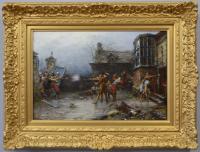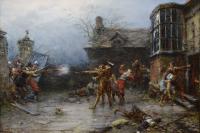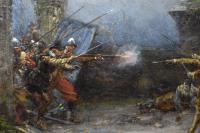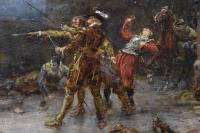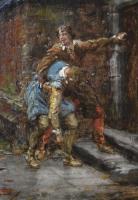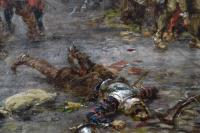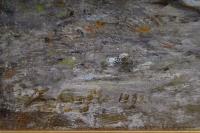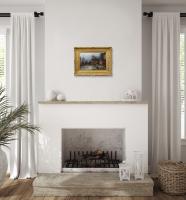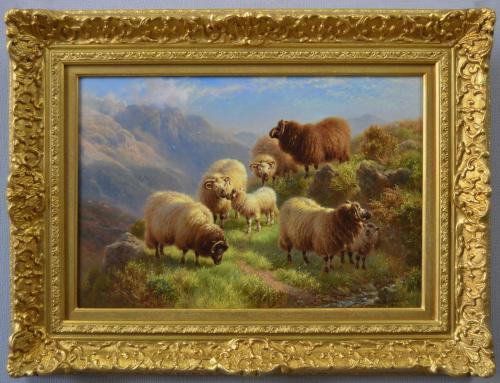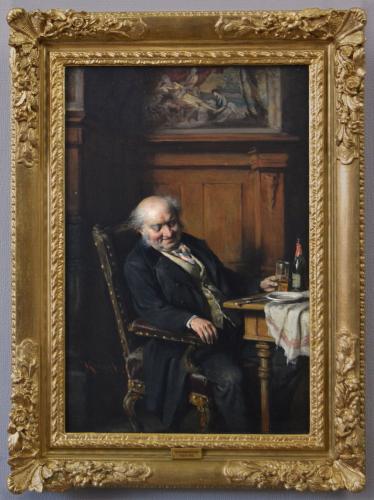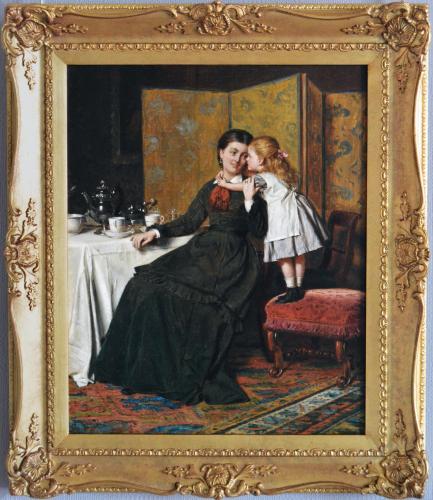
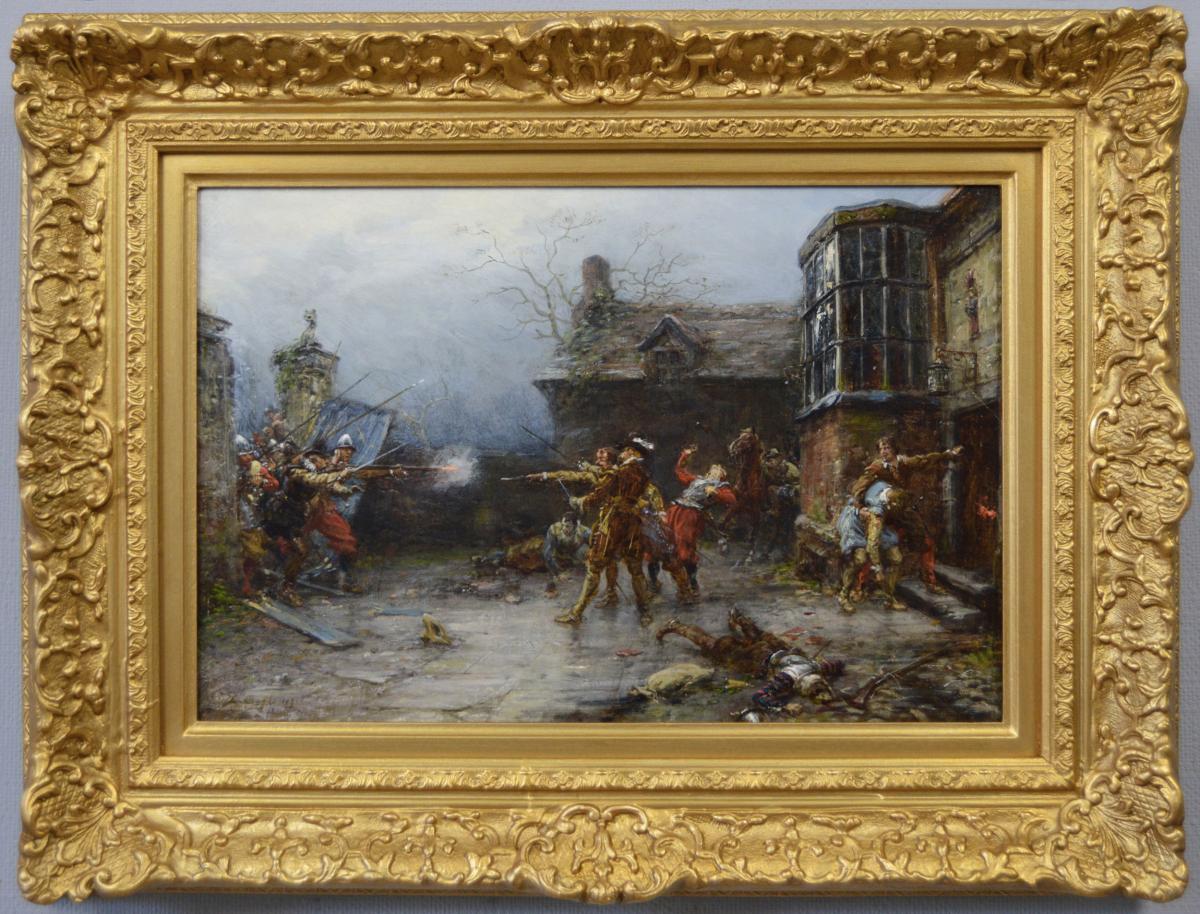
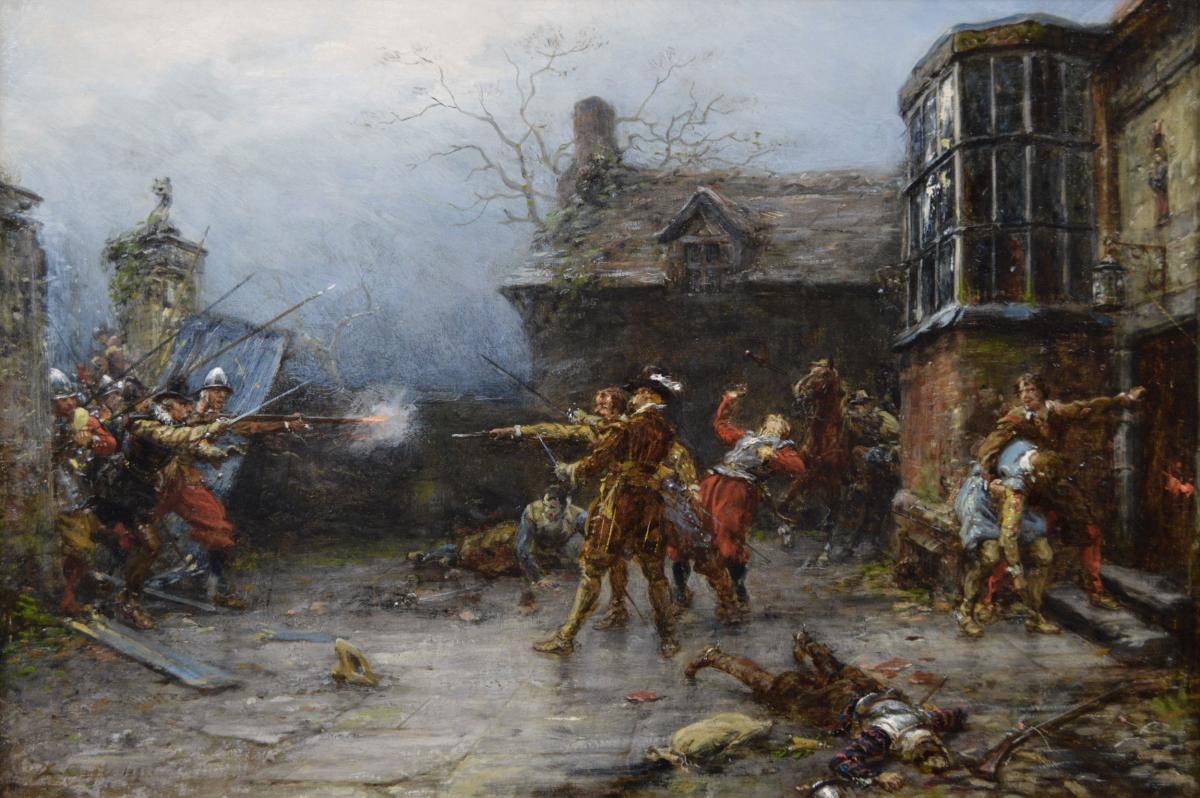
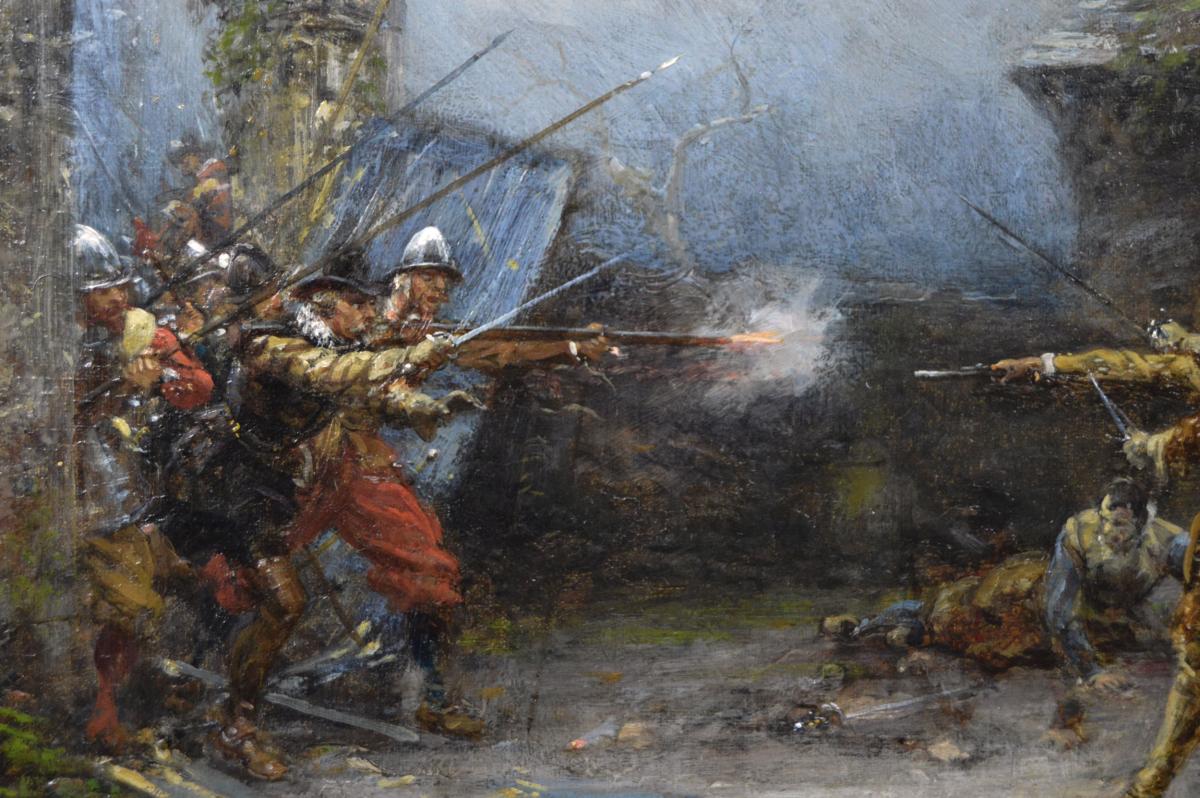
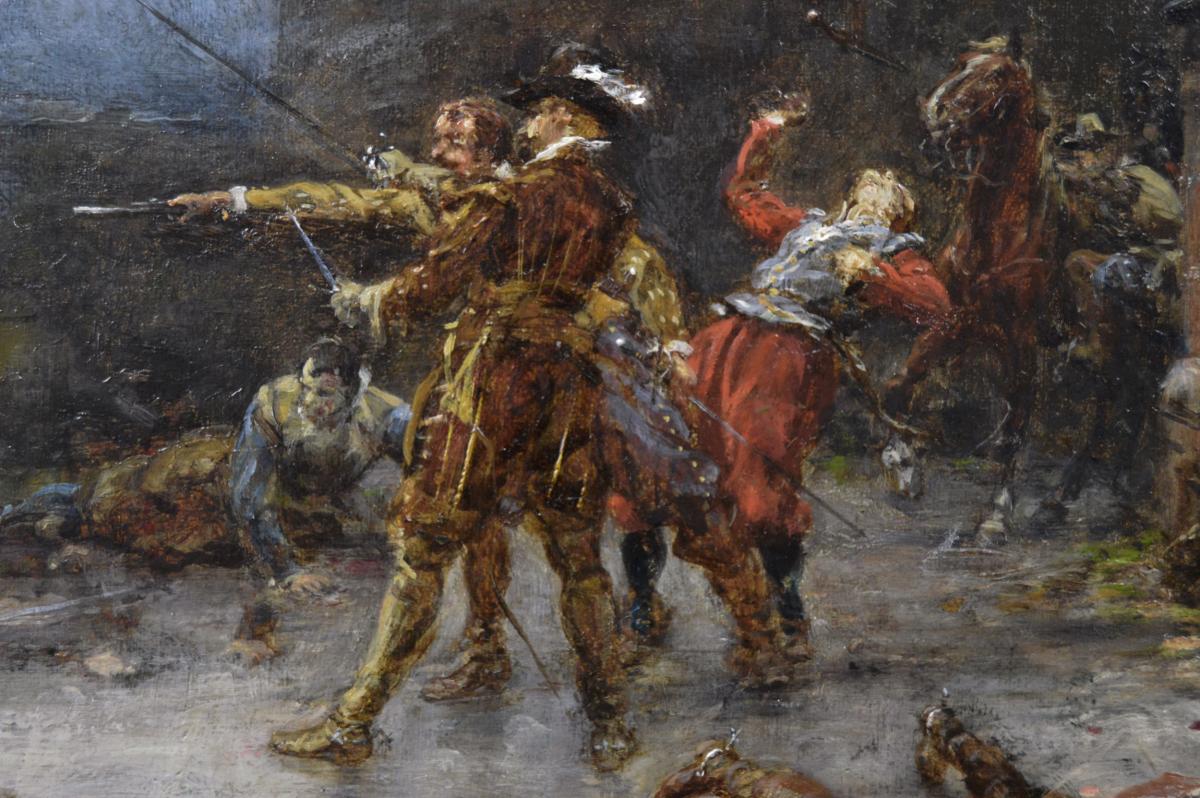
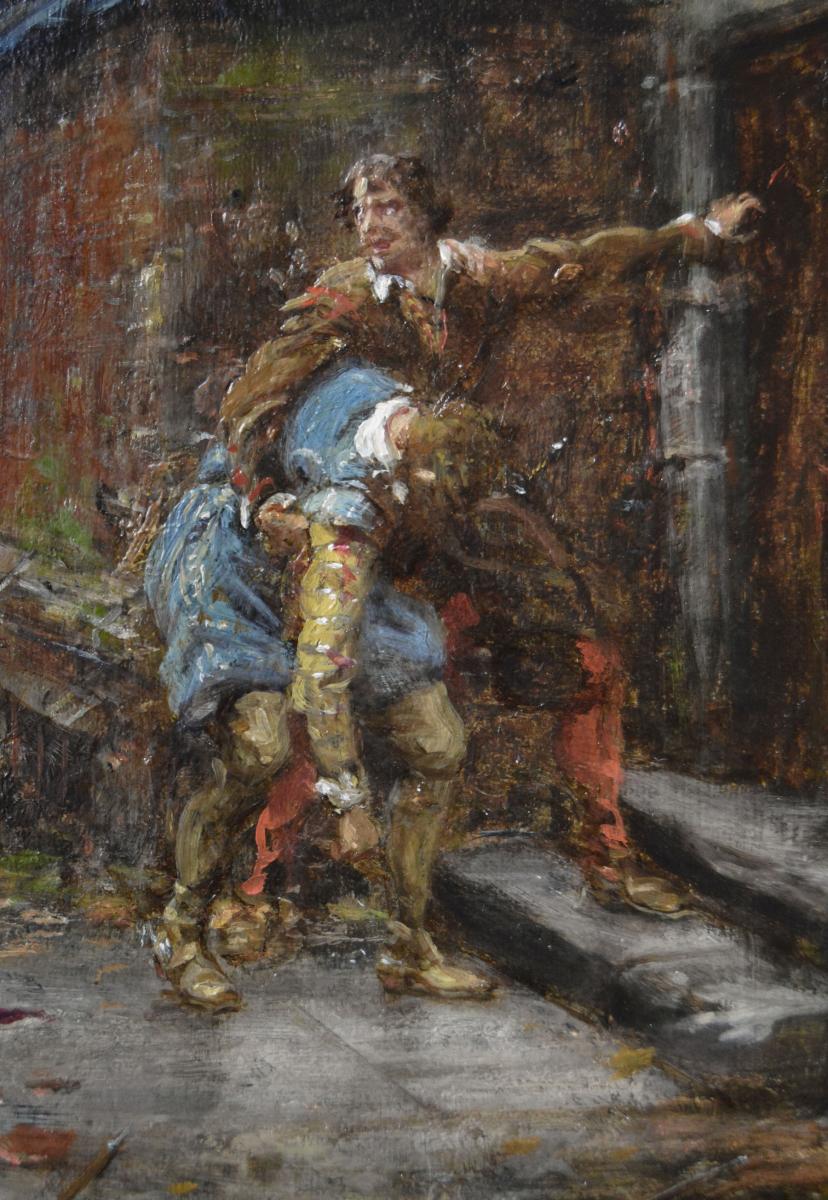
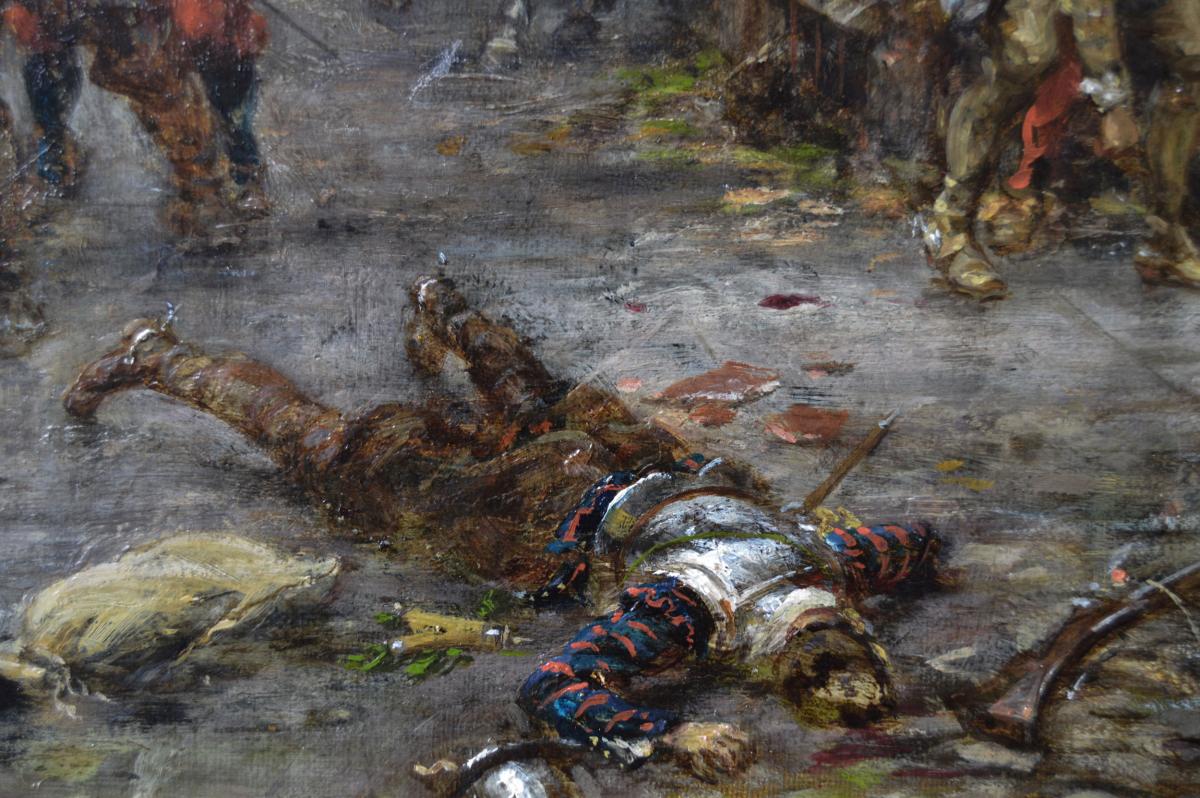
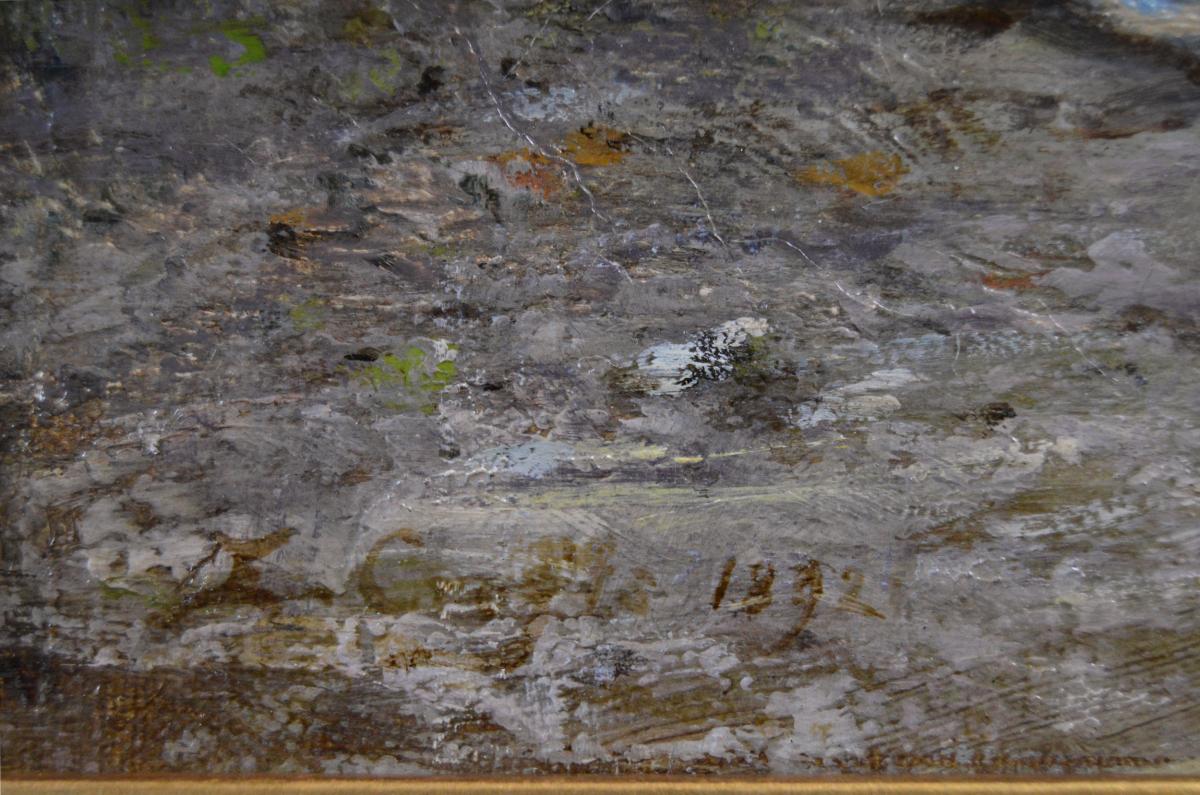
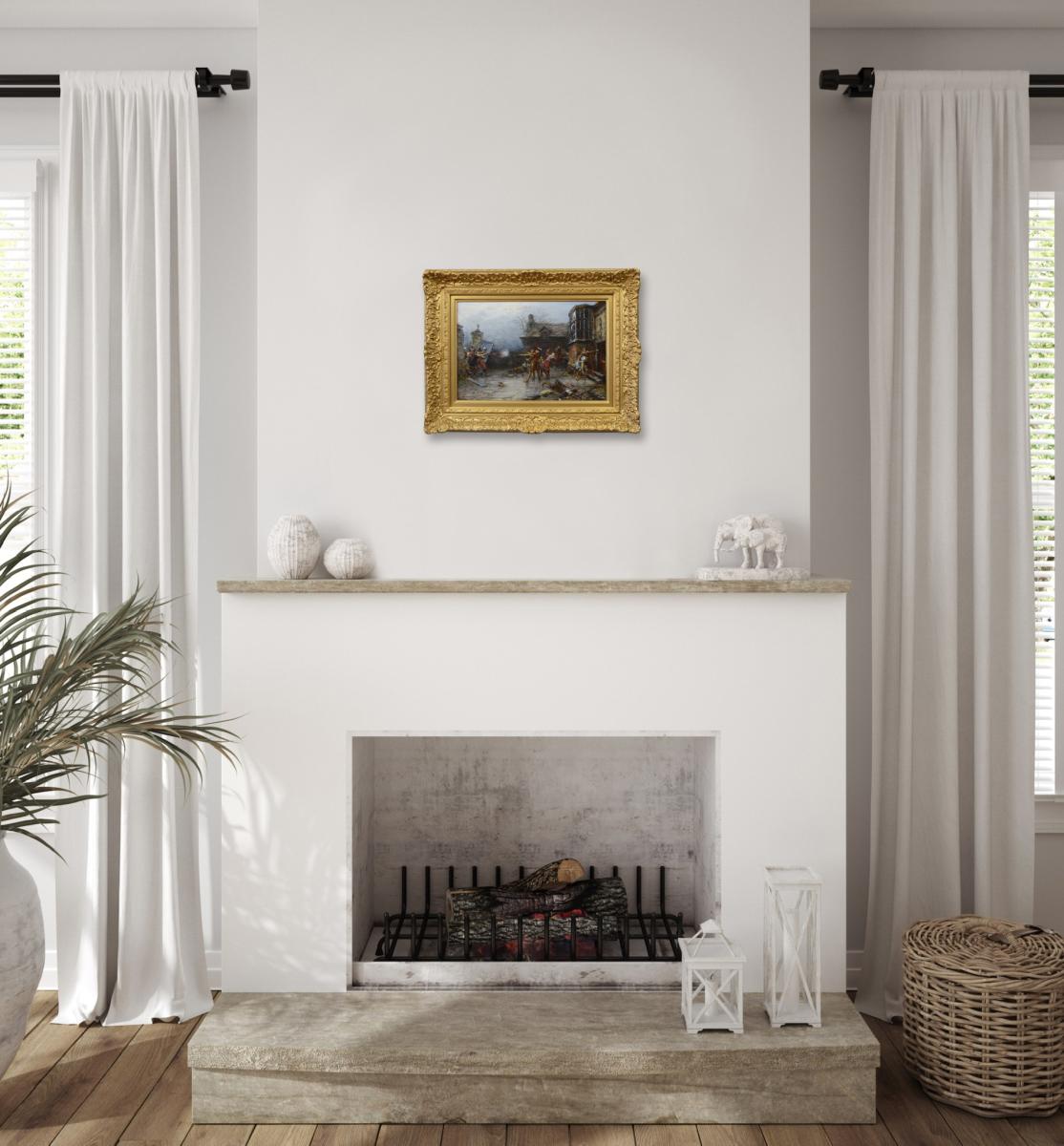
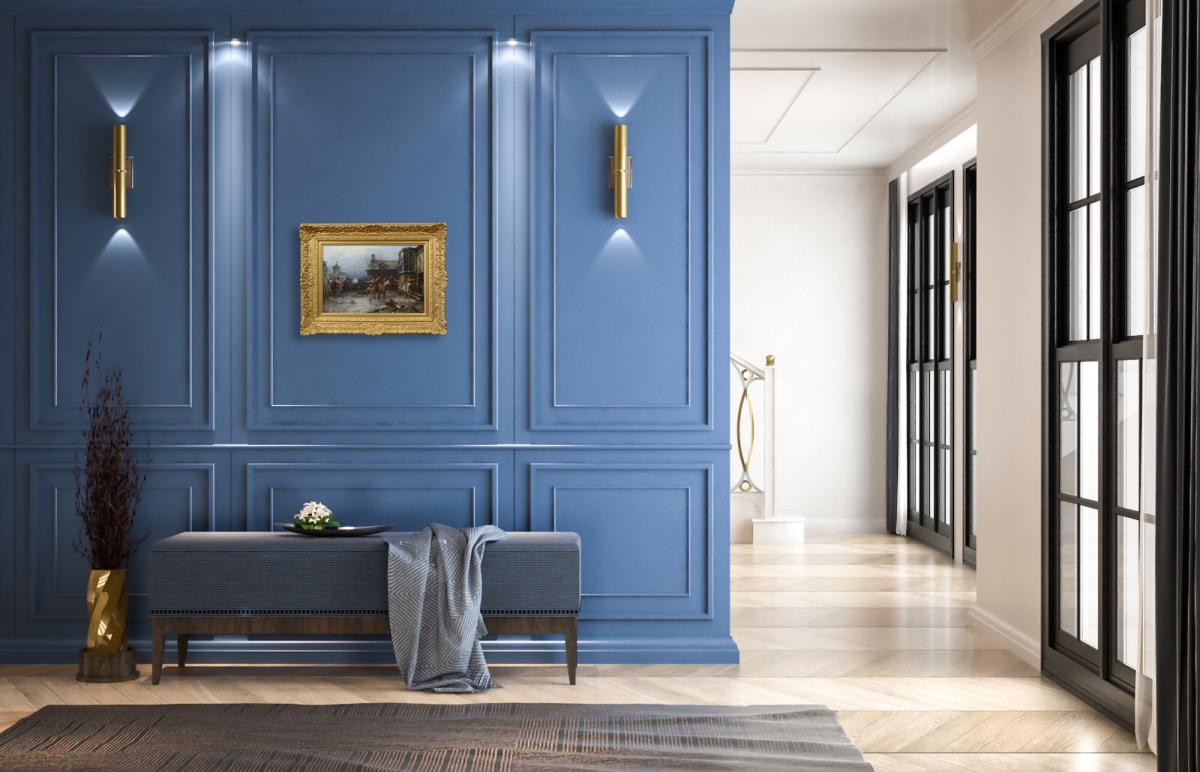
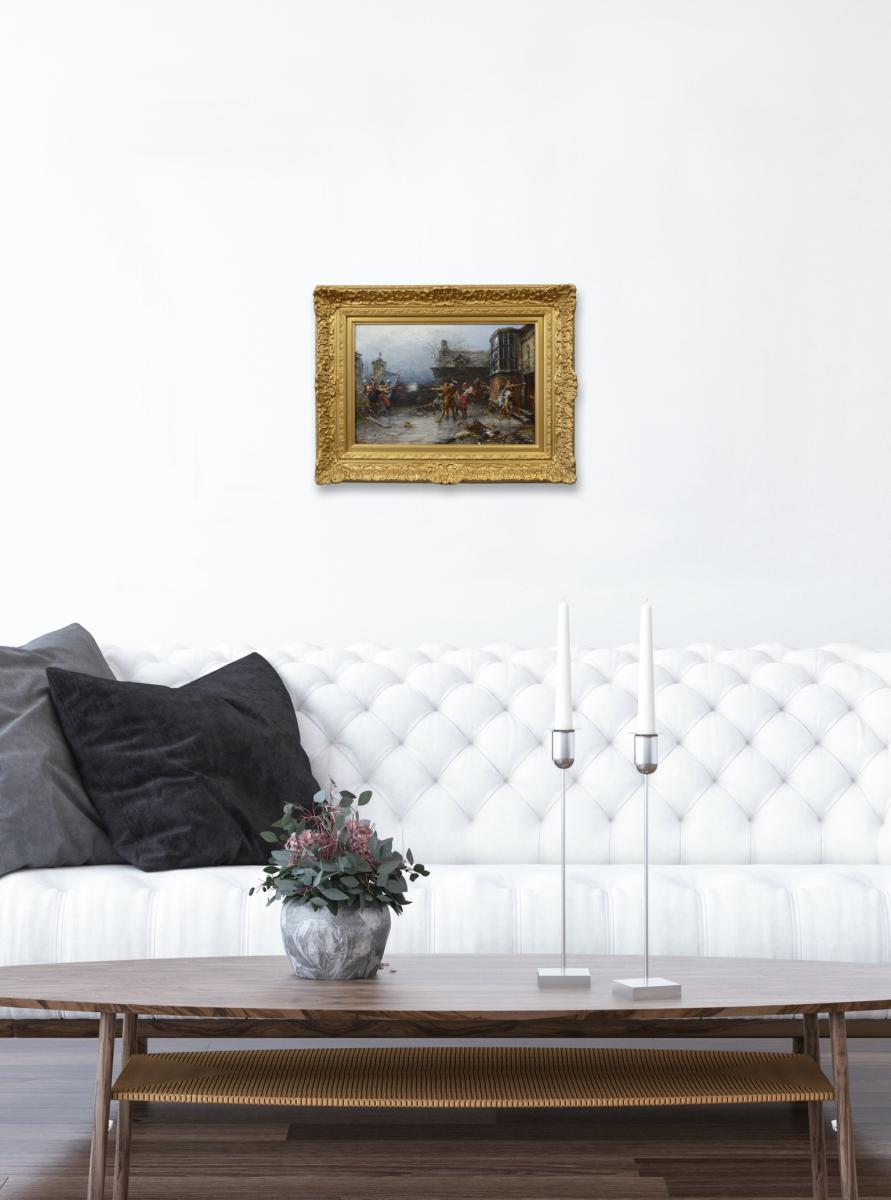
Price
£6950.00This object is eligible for a Certificate of BADA Provenance
The BADA Standard
- Since 1918, BADA has been the leading association for the antiques and fine art trade
- Members are elected for their knowledge, integrity and quality of stock
- Our clients are protected by BADA’s code of conduct
- Our dealers’ membership is reviewed and renewed annually
- Bada.org is a non-profit site: clients deal directly with members and they pay no hidden fees
Ernest Crofts
British, (1847-1911)
The Gunpowder Plot; the Conspirators Last Stand at Holbeche
Oil on canvas, signed & dated 1892
A dramatic historical painting depicting the last stand of the gunpowder plot conspirators at Holbeche House, near Dudley, Staffordshire by Ernest Crofts. It is the smaller version of a larger exhibition piece that was shown at the Royal Academy in 1892.
Ernest Crofts was one of the leading military and historical painters of the late Victorian era. He was born in Leeds on 15 September, 1847 to John and Ellen Crofts (née Wordsworth). His father was a solicitor who also set up a manufacturing business and acted as a local magistrate. His father’s wealth allowed him to attend Rugby School in Warwickshire. After leaving school, he studied art in London under Sir Arthur Bart Clay (1841-1928). However, he became interested in military subjects and decided to move to Dusseldorf in 1870 to study art with the German military artist Emile Hunten (1827-1902).
During his stay, he accompanied Hunten to a number of battlefields during the Franco-Prussian war. He married Elizabeth Wüsthofen from Dusseldorf in 1872 and a year later their only child, Elizabeth was born. The family lived at Adlerstrasse, Dusseldorf from where he made his debut at the Royal Academy with ‘A Retreat: An Episode of the German-French War’. The painting also won him a silver medal the Crystal Palace show during the same year. During the following year he started painting historical military scenes beginning with the Waterloo campaign which he began exhibiting at the Royal Academy. Crofts’s attention to detail extended to building up a large collection of uniforms and accessories as well as visiting the battlefield sites of Waterloo and other wars. He also became interested in the English Civil War, painting many scenes and it was his Royal Academy picture of 1877 ‘Oliver Cromwell at Marston Moor’ that brought him critical acclaim.
He returned to England sometime during 1878, where he lived at 58 St Mary’s Terrace, Maida Vale in London. He was elected Associate of the Royal Academy on 19 June, 1878 and full Academician on 20 July 1896. During the 1880’s he kept a studio at Queen’s Road, St Johns Wood and by 1890 had moved to Grove End Road. In 1898, he became Keeper of the Royal Academy, a job that required firmness and tact, remaining in the post until the year of his death. His position allowed him and his family to live at the Academy’s apartments at Burlington House. His interest in antiques and history also gave rise to his being made a Fellow of the Royal Society of Antiquaries in 1900.
Crofts died in London on 19 March, 1911 at Burlington House and was buried at the Kensal Green Cemetery. Examples of his work are held by Colchester & Ipswich Museums, Bristol Museum & Art Gallery, Dudley Museum, Leeds Art Gallery, Pannett Art Gallery, Sheffield Musuem, Towneley Hall Art Gallery, the Royal Academy of Arts Collections and the Walker Art Gallery.
Presentation: The work is housed in a new, English made gilt frame which is in excellent condition.
Condition: As with all of our original antique oil paintings, this work is offered in ready to hang gallery condition, having been professionally cleaned, restored and revarnished.
© Benton Fine Art
Dimensions
Image Size: 11.5 inches x 17.25 inches (29.5cm x44cm) - / Framed Size: 19 inches x 24.75 inches (48.5cm x 63cm)The BADA Standard
- Since 1918, BADA has been the leading association for the antiques and fine art trade
- Members are elected for their knowledge, integrity and quality of stock
- Our clients are protected by BADA’s code of conduct
- Our dealers’ membership is reviewed and renewed annually
- Bada.org is a non-profit site: clients deal directly with members and they pay no hidden fees


